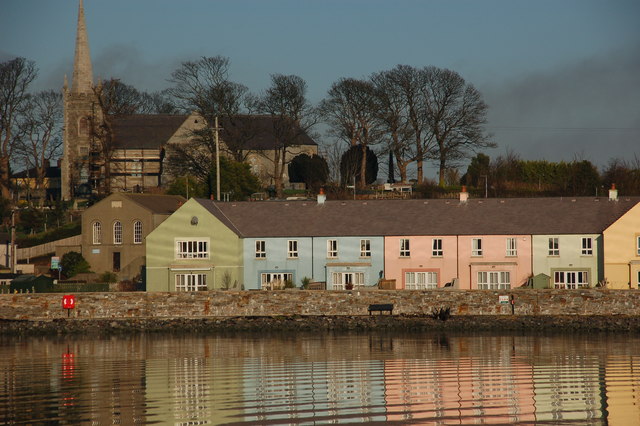Philomena, starring Judy Dench and Steve Coogan, is a film based on the true story of a woman from Northern Ireland called Philomena Lee (Dench) who had a son out of wedlock, which led to her being sent to a convent. The son was taken away from her and ended up in America. The film centres on Philomena’s search for her son with the help of TV presenter Martin Sixsmith (Coogan).
A large proportion of the film is set in America, where Philomena and Martin go in search of the lost son, but in the early scenes we are treated to the sight of the Mourne Mountains and surrounding area. In the scene where Martin picks up Philomena to take her to the convent to quiz the nuns about her son, we see a sign saying ‘Birr’. There is a town called Birr in County Offaly, Republic of Ireland, but the scene was actually filmed in Rostrevor on Carlingford Lough, close to the Mourne Mountains, and Philomena is seen waiting opposite the Killowen Inn on Bridge Street.
 |
Rostrevor (elevated view) - geograph.org.uk - 278010. Photo by Albert Bridge, via Wikimedia Commons
|
Further north in the county, in Killyleagh, the Dufferin Arms pub was used in the scene where Philomena and Martin discover that there was a fire which destroyed the convent’s records, while suspiciously leaving the convent itself intact. The landlord of the pub was so chuffed at his hostelry being chosen for the scene that a party was held to celebrate the premiere of the film.
 Killyleagh harbour (1) - geograph.org.uk - 296250. Photo by Albert Bridge, via Wikimedia Commons Killyleagh harbour (1) - geograph.org.uk - 296250. Photo by Albert Bridge, via Wikimedia Commons |
The Mountains of Mourne are a constant presence overlooking the coastal areas between Newcastle, County Down, and points south, as well as the county’s inland areas. They include the highest mountains in Northern Ireland, most notably the mighty Slieve Donard. Rostrevor lies at the southern entrance to the mountains and is bordered by the Rostrevor Forest, which has many attractive paths for walkers to explore. The area is also rich in historical and folkloric remains. Killyleagh lies on the western side of Strangford Loch. One of its most attractive features is its harbour lined with houses of different colours. The harbour was the recipient of coal imports from England until the 1980s.
Map of County Down.

